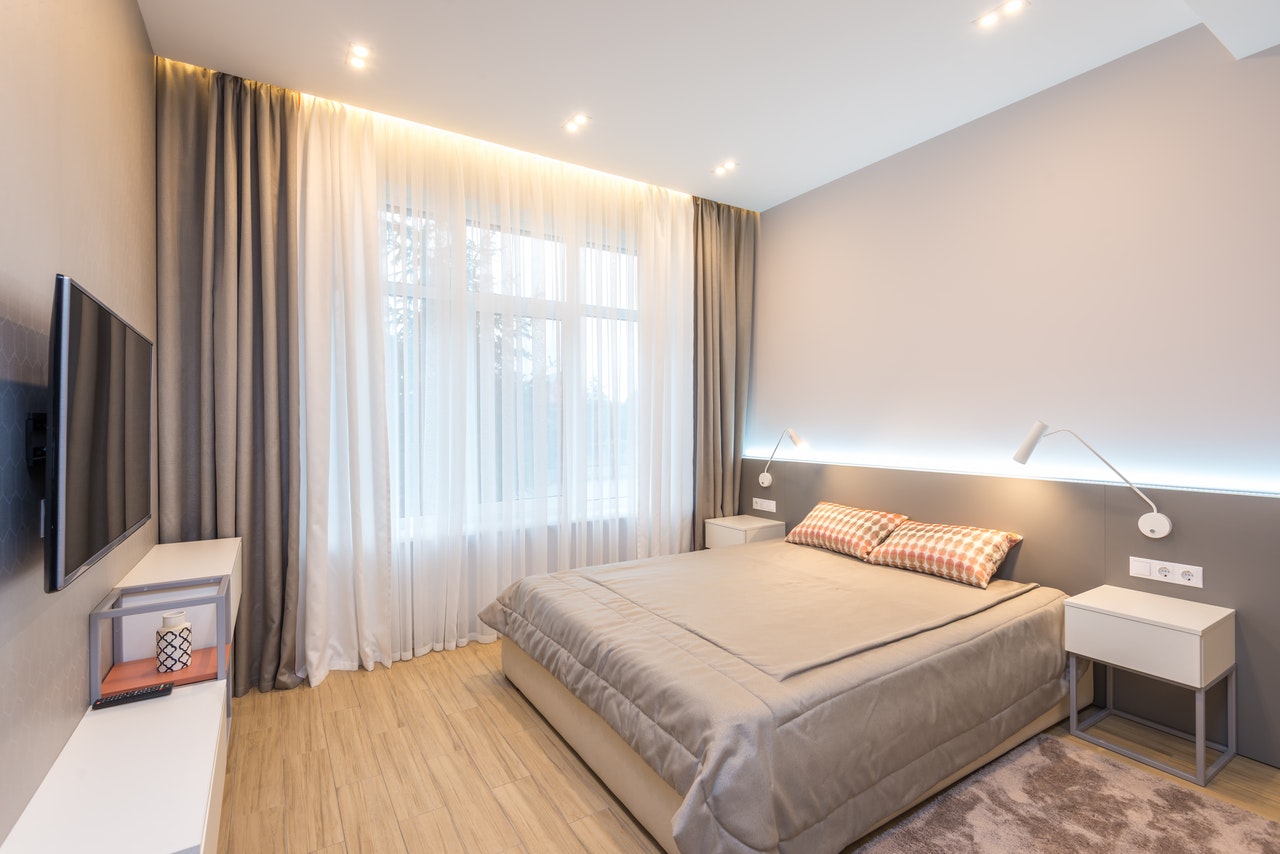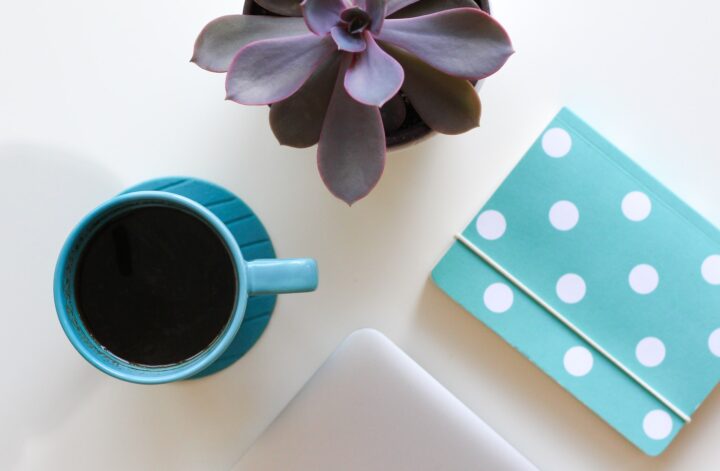There was a time when you could lie back in quiet solitude in your own garden. Then the neighbours cut down some trees on their property, or have built a new house with a loggia with a beautiful view of your yard. And now you feel like you are living in an aquarium.
Maybe you like to spend your time in a front yard and can’t have solitude. Or you don’t even have a big yard or garden, and you are living in an apartment on the ground floor. You are faced with a serious problem – the views of passers-by. Someone parks under the windows, someone walks the dog, and someone just walks nearby – and everyone wants to look through the windows.
Of course, this annoys you and makes you wonder how to hide your home from prying eyes. That is why we prepared a guide for you on how to improve the sense of privacy in your home.
Outdoor solutions
As most homes are shrinking and the demand for gardens is growing, privacy is becoming a premium. And it’s not just about invading your privacy, you can also isolate your own garden from extraneous sounds.
Plant protection
Such plantings can provide year-round protection and, as a rule, their growth is not limited by municipal ordinances. Where space between houses is tight, fast-growing columnar evergreen cypresses such as thujas provide an easy solution to dividing adjoining yards or blocking out ground floor windows.
It is necessary to plant new shrubs in two trenches 30-60 cm wide about 12 cm from each other, and fertilise the soil until the trunk branches. Water deeply and frequently in the first year using drip irrigation. These deciduous shrubs require a temperate climate and owners willing to prune them as often as required.
Multilevel plantings
In large yards, personal space is achieved by a combination of deciduous and evergreen trees, shrubs and perennials. Due to them, a more natural look is created, especially if the plants are arranged in levels. Planting deciduous trees, which tend to grow from 150 to 180 cm in height, depending on the species, is a good way to hide from your neighbours from a second-floor window or terrace. The tree will provide shade in summer, so you can place a patio or deck under it. In winter, the bare branches of the trees allow the sun to shine into the house.
Closed deck or patio
Potted plants such as thuja or bamboo can create a green screen around deck chairs.
Ideally, the pots should be raised up on casters or made of lightweight materials, so you can easily move them around. For a long-lasting green screen, combine spectacular perennials with ornamental grasses and shrubs. Go for a mix of colours, textures, and foliage types.
Fence like a wall
Growing a live fence can take a long time to achieve the desired result. A 180 cm solid fence is the fastest way to protect year-round – just be sure to check the rules and regulations regarding fence heights (and any other restrictions). It can also be the best solution for a backyard that is cramped, as the fence takes up less space than the planting. But while a fence can solve the problem of personal space, it is not always the most aesthetically pleasing. To soften the massiveness of the fence, add flowering and evergreen shrubs.
Stone walls with wood additions
Another suitable option is to install a short trellis or wood fence on top of a 60 cm stone wall. The walls are high enough to disrupt the line of sight, and the delicate fences do not evoke a sense of enclosed space. Good walls are built on good foundations. In areas with a lot of clay and poor drainage, you will have to dig a hole 40 cm deep, as well as install pipes to drain water from the foundation.
Gazebos
Gazebos are suitable for small courtyards, as it is easier to build a gazebo than to fence off an entire courtyard. By creating and decorating a gazebo, you can, on the one hand, create a feeling of cosiness, and on the other hand, it is a great place for relaxation and entertainment. Prefabricated iron gazebos can be installed directly on the ground, surrounded by indoor grapes and hanging baskets.
Grilles, wood panels and decorative metal
The fence can be made of lattice, lattice wood panels, or pieces of decorative iron with pillars dug into the ground to create a cosy corner or make U-shaped structures. For maximum mobility, consider poles mounted in lightweight pots on wheels. To secure the posts in place, choose snap castors or lay gravel around them.
This way, they can be moved around to create a more open space during parties. Of course, translucent structures cannot completely protect privacy, but they do allow sunlight to pass through.
Indoor solutions
How to protect windows from prying eyes:
Curtains
Residents of apartments located on the ground floor usually use curtains to protect from the eyes of passers-by. But if you curtain the windows with blackout curtains during the daytime, the room will become dark. This option is suitable for night protection. And when you consider that the curtains on the ground floor collect dust, the rationality of their use is questioned.
Tint
Another not so good way to protect yourself from the eyes of passers-by and neighbours is to tint the windows. Even by darkening a separate part of the glass, the room will become too dark, and you won’t like this effect.
Decorations
Also, it is hardly worth making the windowsills from the inside with various decorations, flowers and other elements. This does not look very neat and creates a corresponding impression of the tenants.
Now let’s look at effective ways to add privacy to your home:
Protective mirror film
With the help of a mirror film, you can protect yourself from prying eyes, as well as make the glass stronger and protect the room from excess sunlight. But this material has a drawback: it becomes darker in the room due to the fact that the film reflects the sun’s rays.
It is unlikely that you will be able to protect yourself with a mirror film at night. Visibility from bedside lamps increases, and passers-by will still be able to see what is happening in an apartment on the ground floor or in a private house.
Matte film
This way of ensuring privacy on a window looks easy and casual. Matte film does not darken the room and hides well from unwanted glances. The matte film should be glued to the lower parts of the window so that sufficient daylight enters the room.
Glass unit with variable transparency level
One of the best ways to ensure privacy is to install a glass unit with variable transparency, also known as a smart window. This glass is completely safe. Its effect is explained by its multi-layering – you can choose the level of light transmission that you need at a certain moment, and, if necessary, change it by pressing just one button.
A glass unit with a variable level of transparency is 99% protected from ultraviolet rays, which is a significant advantage. However, such a pleasure is quite expensive. Smart windows are often installed in offices and conference rooms. In the near future, the developers plan to make inexpensive smart windows that are affordable for the average buyer.
Blinds
You can also ensure privacy with ordinary blinds. Today they are used not only in office buildings and shops, but also in residential premises. In addition, now in stores you can see stylish and beautiful models that can not only protect you from prying eyes, but also decorate your house or apartment.
The best solution would be to choose premium honeycomb blinds. Besides providing you with privacy, they are also excellent at absorbing sound, which is perfect for large hard-floored areas or for anyone living near or on a busy street.
Wooden shutters
An original way to protect windows is to install wooden shutters. This tool was also used by our grandparents in the villages, but today design has become modern, and different types of wood are used as material. The shutters are closed at night and, if necessary, to be protected from prying eyes at any time of the day. In addition, they provide reliable protection from the sun.
Conclusion
In any case, taking care of the privacy of your personal life, you should take care of the access of daylight to the room. If there are many windows in the house, then this requirement is easier to comply with, but if there are two or three of them, then excessive decor can become not only protection from prying eyes, but also a barrier for the penetration of sunlight. Living in a dark room is not recommended – it is harmful to the eyes, mood, and overall well-being.
Article by Emma Williams
Emma is a proud member of Alejandra’s Life Family Team




